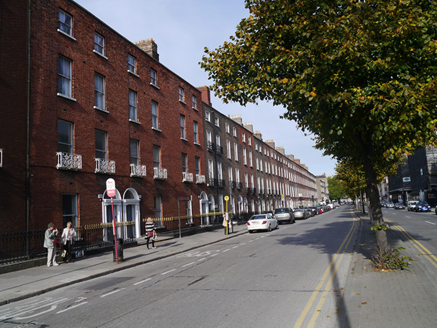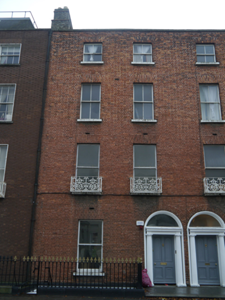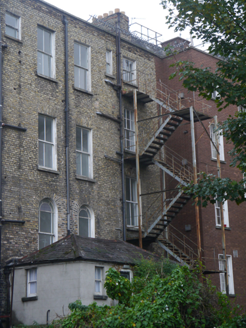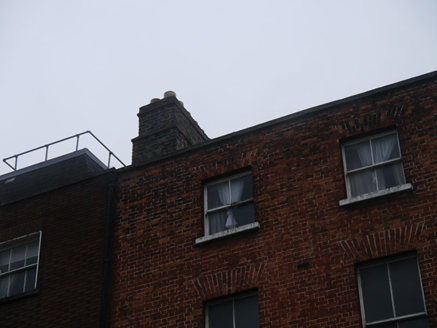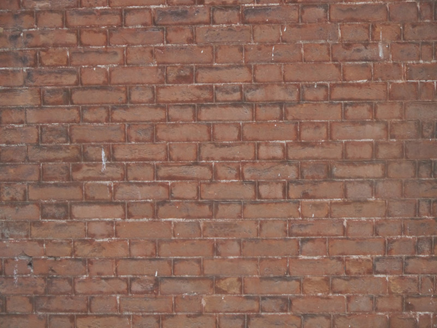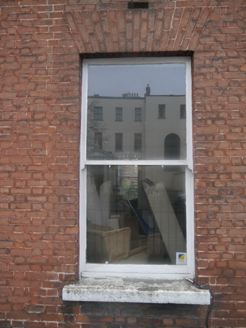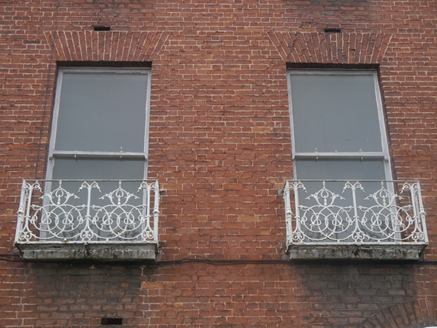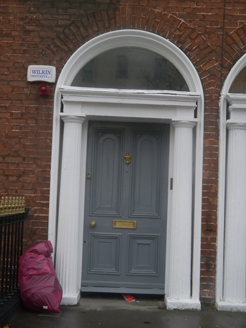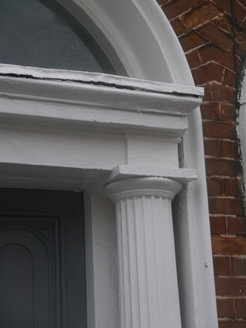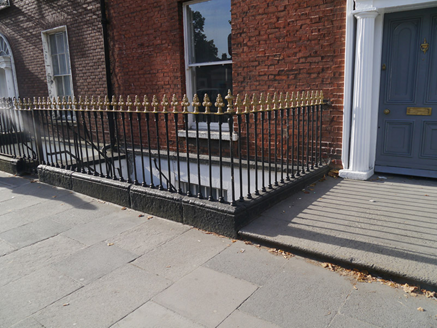Survey Data
Reg No
50930184
Rating
Regional
Categories of Special Interest
Architectural, Artistic
Original Use
House
In Use As
Apartment/flat (converted)
Date
1860 - 1865
Coordinates
316829, 233066
Date Recorded
15/09/2015
Date Updated
--/--/--
Description
End-of-terrace two-bay four-storey former townhouse over basement, built 1864, with shared single-storey over basement hip-roofed return to rear (south) elevation. Now converted into flats. M-profile pitched roof, hipped to west, with shouldered buff brick chimneystack to west party wall with replacement clay pots. Roof concealed behind brick parapet (rebuilt to rear), with granite coping, concealed gutters and replacement hopper and downpipe to rear. Red brick walling with wigged pointing, laid in Flemish bond, with ruled-and-lined rendered walling to basement having granite stringcourse. Buff brick walling to rear (south) elevation, laid to English garden wall bond. Square-headed window openings with granite sills, brick reveals (rendered to rear) and brick voussoirs; openings diminishing to the upper floors. Timber sliding sash windows with convex horns throughout, one-over-one to ground and first floors, two-over-two to upper floors and eight-over-eight to basement with metal grille affixed. Round-headed opening to ground floor rear (south) with one-over-one sash having margin lights; range of timber sashes to east-side rear including six-over-six and three-over-three. Decorative cast-iron balconettes fixed to sills of first floor window openings to north. Round-headed door opening to eastern bay of principal elevation with brick voussoirs, moulded linings and Neo-classical doorcase comprising fluted Doric columns rising to moulded cornice over frieze with replacement plain glass fanlight over four-panelled timber door with brass furniture. Shared concrete rendered entrance platform with granite step to street, flanked to east by cast-iron railings with decorative finials and corner posts on granite plinth, enclosing basement well. Square-headed timber door located beneath entrance platform with replacement sidelight accessed by recent steel steps from street level. Steel fire escape abuts to east-side of rear elevation. Street fronted on south side of Baggot Street Lower, abutted by similar earlier terraces to the west and a mock-Georgian terrace, built 1989, to the east.
Appraisal
The cohesive terrace of Nos. 88-90 (50930182-4) was built in 1864 and contains some of the last of the Georgian-style townhouses to be completed on the street. Distinguished by a higher parapet level, single and twin-paned sashes and the striking red brick façade, the terrace is set apart from many of the earlier terraces which line the south side of Baggot Street Lower. Such discrepancies between neighbouring groups is indicative of the speculative nature of its development. Baggot Street, as it became known in 1773, is an ancient route from the city which was named after the manor granted to Robert Bagod in the thirteenth-century, called Baggotrath. Developed on Fitzwilliam’s land during the late-eighteenth century, construction of the street progressed slowly due to the economic recession of the 1790s; the area to the west of Fitzwilliam Street was built by the late 1790s but development to the east was more gradual with gaps remaining until the mid-nineteenth century.
